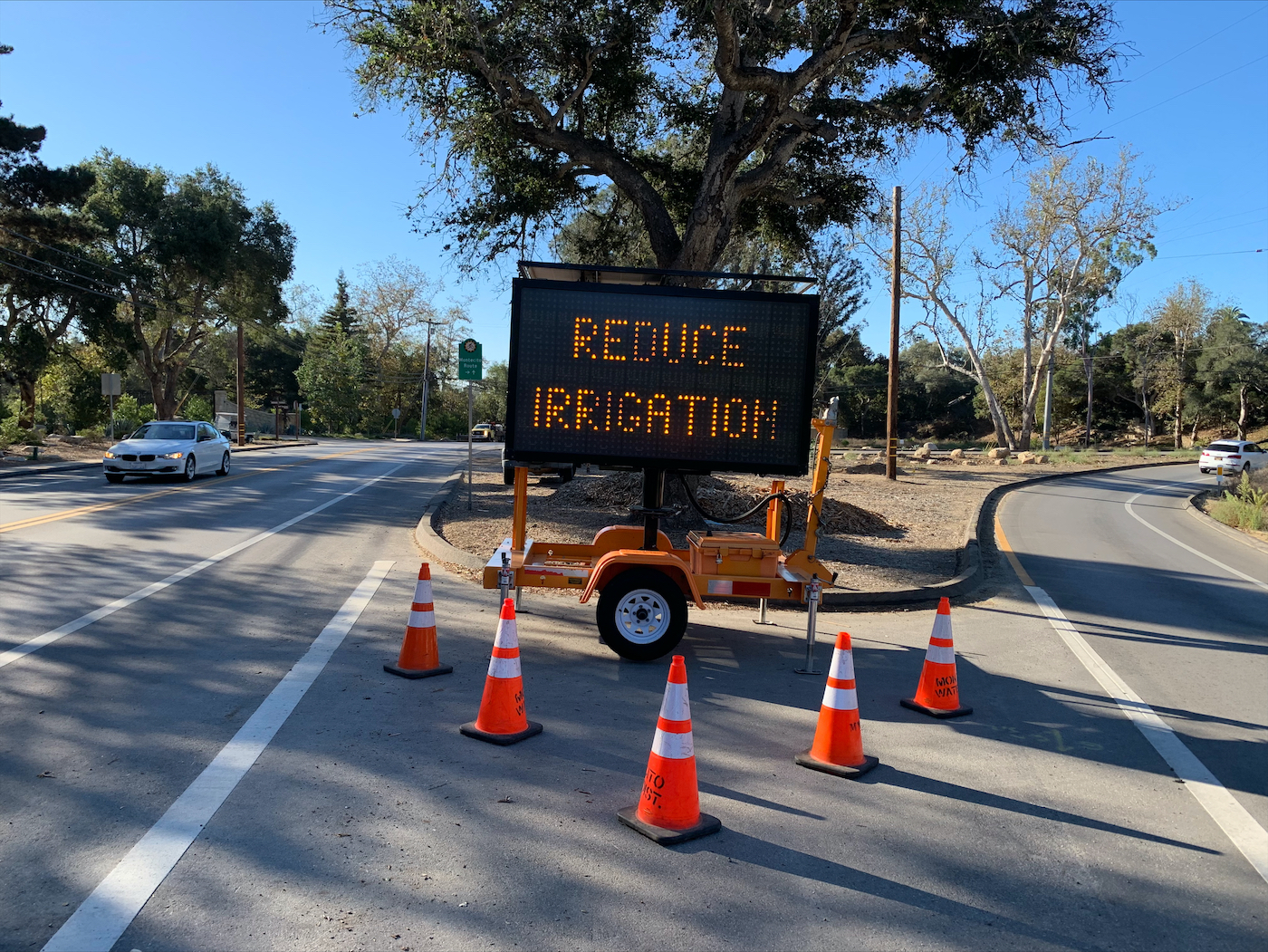Water Use Warning

In an effort to get an urgent and important message to the Montecito community, Montecito Water District (MWD) installed a road sign last week at the triangle on Olive Mill Road and Hot Springs with the rotating message: “Extreme Drought, Reduce Irrigation.” The goal is to get customers’ attention so that they will reduce water use now. The quickest, most effective way to do that is by cutting back on irrigation.
Despite the District’s improved drought resilience in recent years thanks to actions including completing a 50-year agreement with the City of Santa Barbara to share in desalination, customer demand is the challenge and currently, customer water use is too high, according to MWD General Manager Nick Turner. “We’ve planned and budgeted for water supply for the long haul, but right now we need to get demand under control or the District could be facing water shortages as soon as 2024,” Turner informed the MWD Board during a special meeting earlier this month. “We’ve been in drought before, and we know what customer use can and should be. What remains to be seen is if customers will cut use voluntarily, or if the District will have to resort to stricter measures.” The desal agreement was finalized in 2020 and deliveries began in January of this year. Desalination secures approximately 35-40% of the District’s annual budgeted water supply, but nearly 60% of the annual water budget is still comprised of sources dependent on rainfall that are vulnerable to drought. With customer use trending more than 20% over budget for the second year in a row, the District is turning up the volume on its call to action: get water use back on budget.
Public Information Officer Laura Camp tells us the District has analyzed data that indicates that the increase in customer usage is taking place outdoors. While usage has climbed at Montecito Water District, flows to the two Sanitary Districts serving the District have remained relatively consistent. This points to a clear solution: reduce outdoor use by cutting back on irrigation. When asked about a steep increase in new home ownership in the District, Camp said that within the last five years, approximately 1,628 water service accounts have had a change of ownership, noting that some of these new owners may not be new to the area. 290 of these accounts were randomly selected and 12 months of usage data from before and after the change of ownership was analyzed, and usage was found to have decreased for 135 accounts, resulting in 3.63 acre feet (AF) less usage than the prior owner. Usage increased for 155 accounts, resulting in 4.09 AF more usage than the prior owner. The net increase from new owners of the 290 accounts was 0.46 AFY or less than 1 HCF. “The assessment demonstrates that water usage by new owners is highly variable, and that properties that change ownership likely do not have a significant impact on water use,” Camp told us. “With 70% of single-family homes increasing their water usage, it’s clear that newcomers cannot be blamed.”
You read that right: according to District data, increased usage is widespread across more than 70% of single-family residences, which is the District’s largest customer class and greatest water consumer. In the Special Board Meeting held September 16, Directors again discussed how to get customers to reduce water use voluntarily and avoid the need for stricter measures such as financial penalties. A year ago, the District established a 20% water use reduction goal to promote conservation. As with the Governor’s request for 15% less water use, response has fallen short. In spite of extensive customer messaging over the past year, the District has seen only a minor improvement in water conservation since 2021 and water use continues to trend approximately 25% over budget.
“What we need people to understand is that we have sufficient supplies to provide for the community’s health and safety needs under almost any condition, which is major progress,” said Board Vice President Ken Coates. “What we can’t support is excessive exterior use through unprecedented and extreme drought. Irrigation needs to be cut back.”
On the District’s website, montecitowater.com, customers can find a variety of resources to help with water conservation, and the District provides free on-site visits tailored to the needs of each property. To further support customers, the District is on schedule to roll out a Water Efficiency Plan by the end of the year, including incentives for mulch delivery, landscape conversions, and other water saving efforts.
See the following for a great example of a beautiful drought-resistant garden in Montecito.






